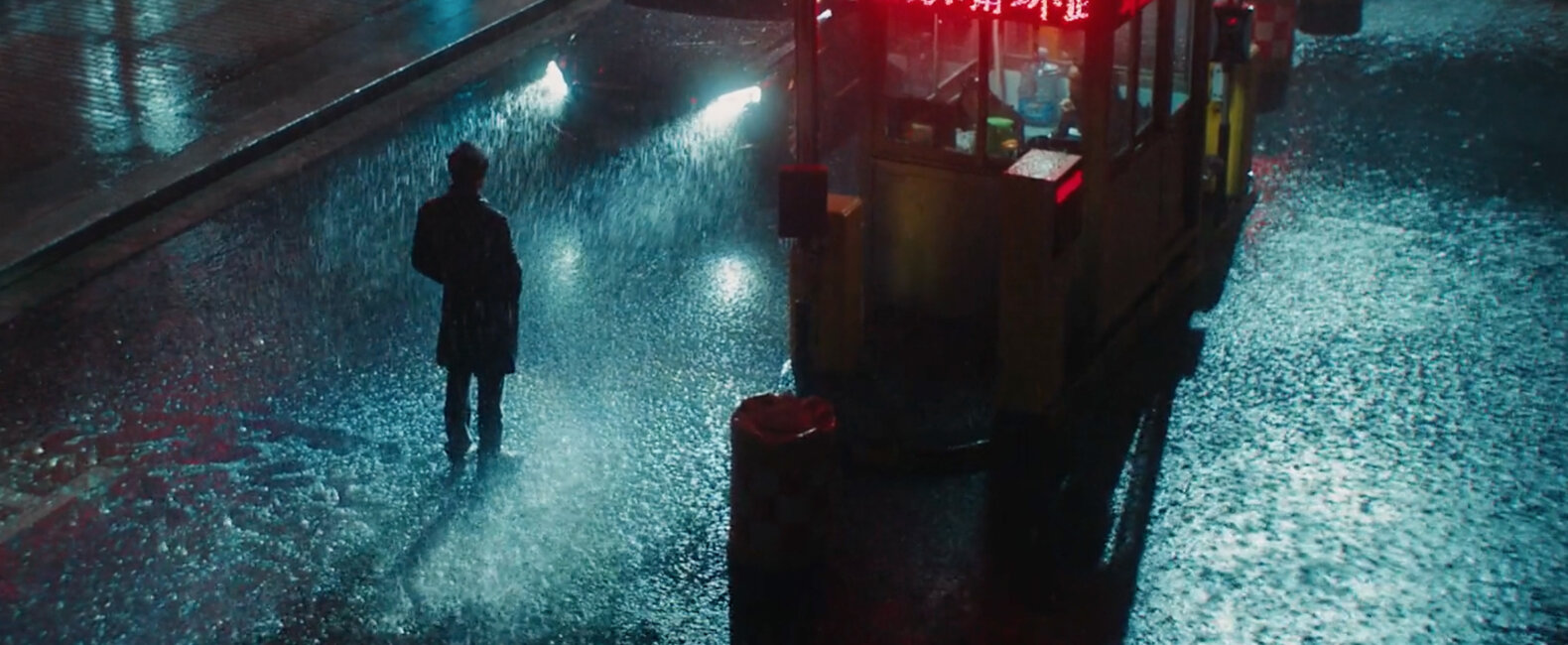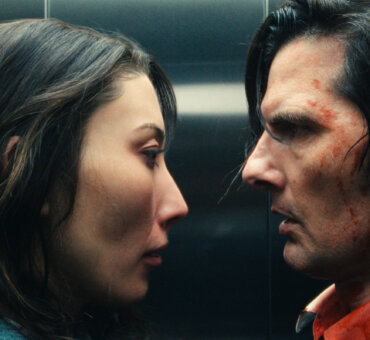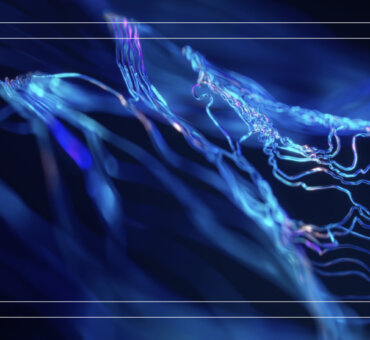When people ask me the secret to great sound design, my answer is simple: Great sound design happens when you’re not afraid of it. A lot of people are fearful of letting sound design do real emotional work on their projects. They tend to let the music tell the audience how to feel, rather than using sound design to create a context in which an audience can feel for themselves. We live in a world where nonmusical sound carries deep emotional cues. The sound of birds. The sound of water. The sound of wind on top of a mountain. These sounds make people feel things. And learning to use those emotional cues effectively, in combination with music, is what great sound design is all about.
Recently, my sound design studio, Defacto Sound, collaborated with Variable on an ad for Buick—a dark, moody, 60-second spot in need of some powerful sound design. We were thrilled to take on the project for two reasons: 1. Variable has a long history of producing amazing work; and 2. They absolutely love the emotional storytelling power of sound design.
Over the years at Defacto, we’ve developed a process for building great sound design. At the risk of giving away our secret sauce, I’ll share it with you now: We throw every crazy, off-the-wall idea we have at a piece and see what sticks. We don’t like to play it safe. Sometimes what you think may be over the top is exactly the punch in the gut a piece needs in order to work. We don’t believe in sound design that tiptoes around. Just as directors, cinematographers, editors, and musicians push themselves to create bold work, we believe sound designers need to push themselves to be bold as well.
Here’s a breakdown of our process on Buick’s ad Progress.
Before Sound Design
Here’s what we got from the editor. It’s a perfectly executed, visually stunning ad that lacks that final punch. Why? Because without sound design, it’s disconnected from reality. It is floating there on our screens. Beautiful, but somewhat weightless. There’s a disconnect from the reality of what’s happening on-screen. Sound design makes a world real. It pushes a piece beyond your screen. I like to think of sound design as the thing that very intentionally melds your mind to the world you’re looking at. But how?
When we first get a piece like this, our sound designer minds immediately start looking for colors, framing, pacing, story, tone, and emotional implications. We try to absorb the visual aesthetic so we can heighten it with the aural aesthetic. In this Buick piece, you see very rich, dark tones that are jolted with bright colors and energy. So right off the bat, we know we’d like to hear a lot of mids, lows, and understated tones, and then contrast them with bright punches of frequencies. That comes down to the way we process the sounds we’ve carefully created and chosen. You can have bright-sounding sparks or dark-sounding sparks. Bright fire or dark fire. You have to process your sounds to fit within the world of the film. In a lot of ways, our work is similar to the way a colorist thinks about color. There are a thousand different greens. But no matter what sounds we use, we are always considering harmony, frequency, and dissonance, and how they interact with each other. Those are the colors we paint with.
Dialogue and Music
Our first step is always to make the dialogue sound incredible. All of our work lies on the foundation of beautiful dialogue. We want the voice to be rich, buttery, and present. We will reduce and remove noise and impurities from the set. Our goal is to have flawlessly clean dialogue and nothing else on that track. This allows us a perfectly clean slate on which to build the world through sound and sonic emotion. Everything rides on how good the dialogue can be. Dialogue is always king and we nitpick every microsecond. The number one thing you can do to make dialogue sound great is record it well — just as you would the picture. Take the same care in selecting your mics as you would your camera. Do mic tests in the same way you’d do camera tests. After all, out of the five human senses, sound and sight are the only two you can work with.
After we perfect the dialogue, we do a music pass to get a feel for how the two work together without any other elements involved. Some of the decisions we make might change later, but our primary goal at this stage is to gain a complete understanding of what the film is “saying” through the visuals, the music, and the dialogue ⎯ and then make sure we’re on track to support and enhance that message.
Sound Design
Once we get into the heavy-lifting phase of sound design, our first thought is What’s going to cut through? If the music has a ton of frequencies and eats up a lot of space ⎯ like it does in this piece ⎯ then it can be harder to find sound design ideas that will cut. So it’s very important to keep the track in mind when you’re making decisions. At the same time, though, we always want the sound design to be able to work on its own, without the track. We want the sounds alone to tell the story. So we think about the rhythm of the sound design (which oftentimes is the result of a great editor). We think about the way different sounds play off each other. We think about how each element of sound design gives the piece an emotion and a reality.
We break down our sound design ideas into four basic categories:
Backgrounds
This can be anything from wind to thunder to crowd murmur. But don’t think that because it’s in the background, it doesn’t need to cut through. Backgrounds need to be distinct. They need to carry weight and emotional tone. Otherwise, instead of adding something valuable to your story or scene, your backgrounds are just making things sound dirty. In this piece, you have the rolling thunder and the rain, which not only cut through very well, but they also give the piece a real sense of environment and reality.
Hard Effects
Hard effects are more instantaneous sounds. A door slam. An explosion. Anything that’s shorter than background noise but still not quite Foley. In this piece it’s the sound of the car being thrown into gear, the pedals being smashed to the floor, the fire lighting. They are elements that we have previously recorded, purchased through a sound library, and have processed and built up with other sounds to our liking. These are the sounds that really do the heavy lifting on connecting the viewer to the temporary reality on screen.
Foley
These are human-based effects — anything people touch with their hands or step on with their feet. These need to be performed if they’re going to be done right. They can be done a thousand different ways, and the way they’re done is an extension of the character. In the case of this Buick commercial, there’s very little Foley, if any.
Emotional Effects
These effects are psychological. They aren’t necessarily tied to the reality of what you’re seeing, but they’re always tied to the emotions of where the story is taking you. This ad is packed full of emotional sound cues. It’s not the actual sound of the car, but it’s the feeling the car gives you.
A 10-Second Look
Here’s how we applied these tools to this Buick commercial. We’ll go 10 seconds at a time.
:01 – :10
The first 10 seconds set the stage for the entire piece. The sounds are all very emotional, which we’ll balance out later with more literal sounds. But here we’re establishing an emotional tone. We see a guy in a coffee shop, but it’s not clear what’s happening. So even though there are a few literal background sounds ⎯ rain on the window pane, muted thunder in the distance ⎯ we are sonically in more of an emotional environment than anything else. Even though we see the car briefly, we don’t really hear it yet. It’s in the distance. So we use a quick swell but avoid anything too literal. In a way, throughout this ad the car becomes realized.
If you look at the colors in the piece, you’ll see that Variable used a lot of reds and blues, which seem polar opposite. So we translate that into sound design by using a lot of mids, and then we punch through them with highs. We use a metallic whoosh and then follow it with something midrange and airy. We use these sounds like paint strokes to highlight the emotions in the opening section.
:11 – :20
This is the first part of the spot that introduces hard effects, but we are still blending them heavily with emotional effects. You start hearing the car more clearly. You hear the engine. You have the hard effect of the driver throwing the car into gear. We are now connecting the reality of what you’re hearing with the reality you’re seeing on screen.
:21 – :30
Here we move out of pure hyperreality and closer to reality. Right around 28 seconds we leave the city, and the sounds become more literal. You hear more of the car and much less of the emotional effects we established at the beginning. Notice, though, that we haven’t gone completely documentary. Our goal is to sell a car. The car is essentially our main character. So our concern is not necessarily capturing the reality of the environment—as we might in a feature film or documentary—but to capture the car. We always have to keep the car front and center.
:31 – End
This area of the ad is very cool in that it combines many of the emotional elements from the beginning with the hard, literal elements of the middle. There is a lot of visual contrast here, and we wanted to make sure that came across in the sound design as well. There are these powerful shots of the car contrasted with igniting spark plugs. The spark plug sound starts very deep, like a roar, but then spikes into much higher frequencies as we see it burst. This is then paralleled by the sound of the car accelerating. Blending together effects like these allows us to highlight the contrasts, while still walking away with a seamless sequence.
Final Film
In the end, like any other part of filmmaking, much of what we do as sound designers is intuitive. It’s about understanding the aesthetic of the visuals, the mood of the song, the message of the piece; and then finding sounds that not only anchor everything in reality, but also elevate moments into the transcendent. It’s very experimental. And to do it well requires taking risks, throwing ideas against the wall, and evaluating if what we’re trying to “say” is clearly communicated. It’s a very organic process. But at its best, and with a little bit of courage, it can be one of the most powerful emotional tools in a filmmaker’s tool kit.
Check out more of Defacto Sound’s incredible sound design work at DefactoSound.com.
Thanks to everyone for joining in the conversation, and congrats to Stephan and Max Retik for being our winners!






